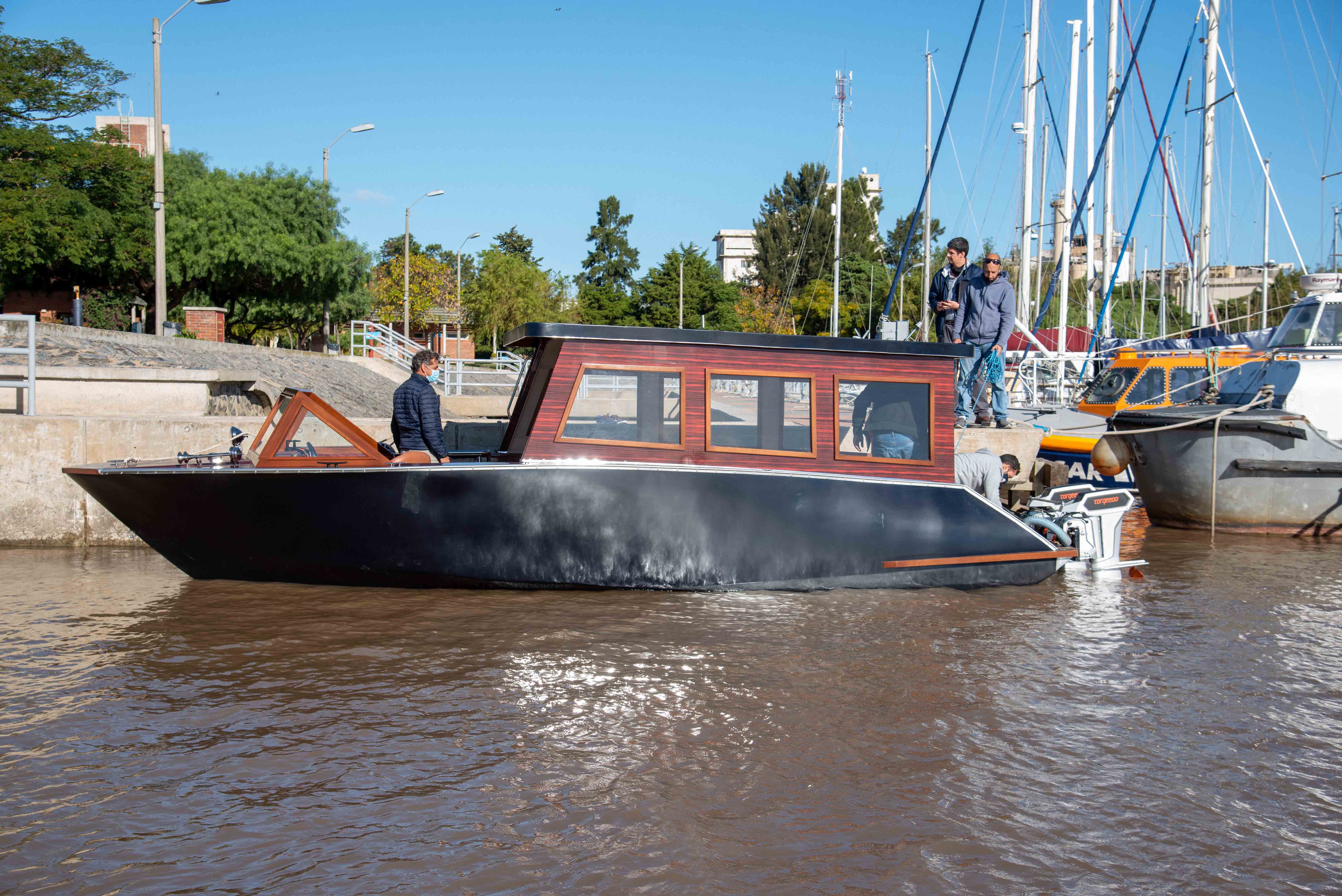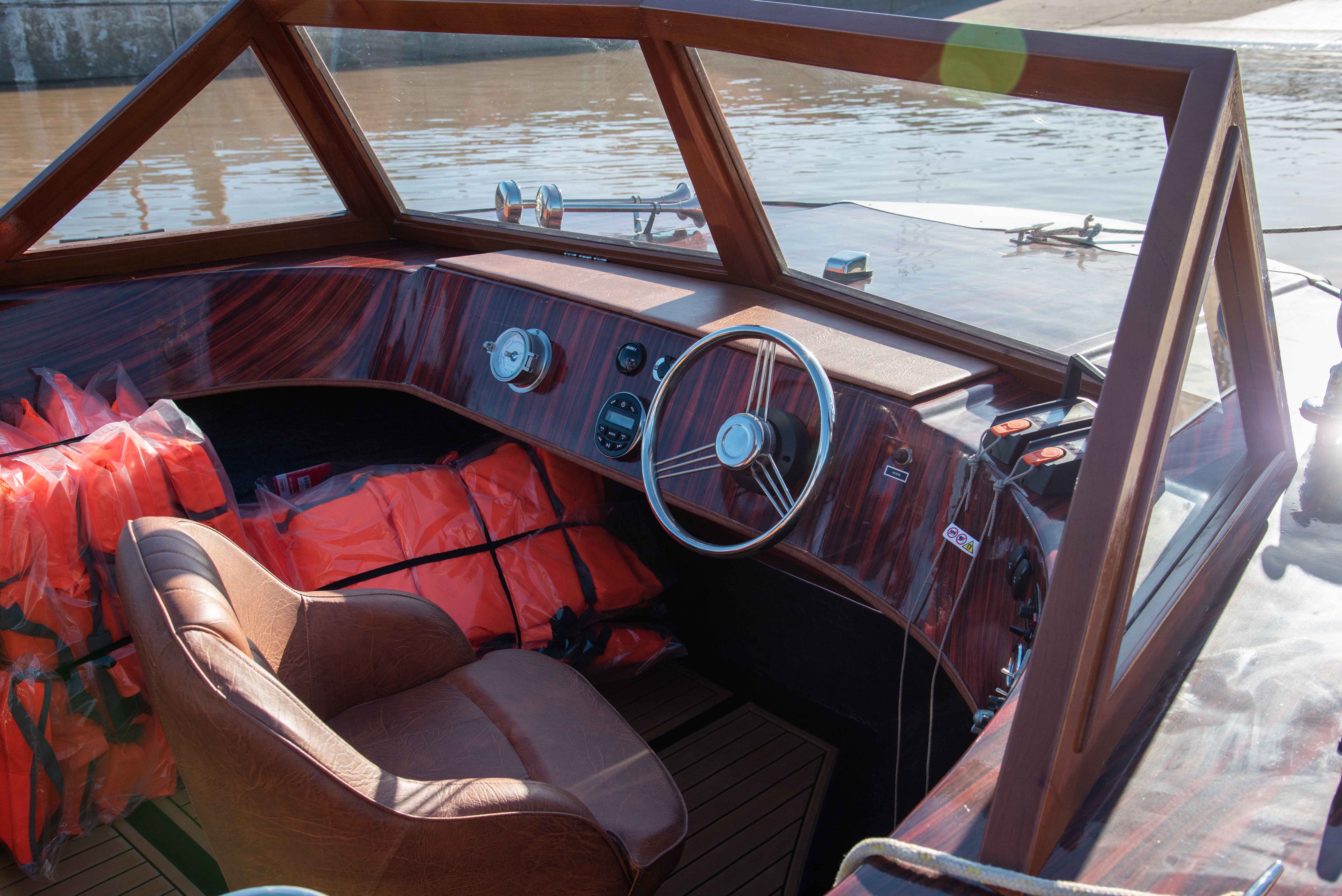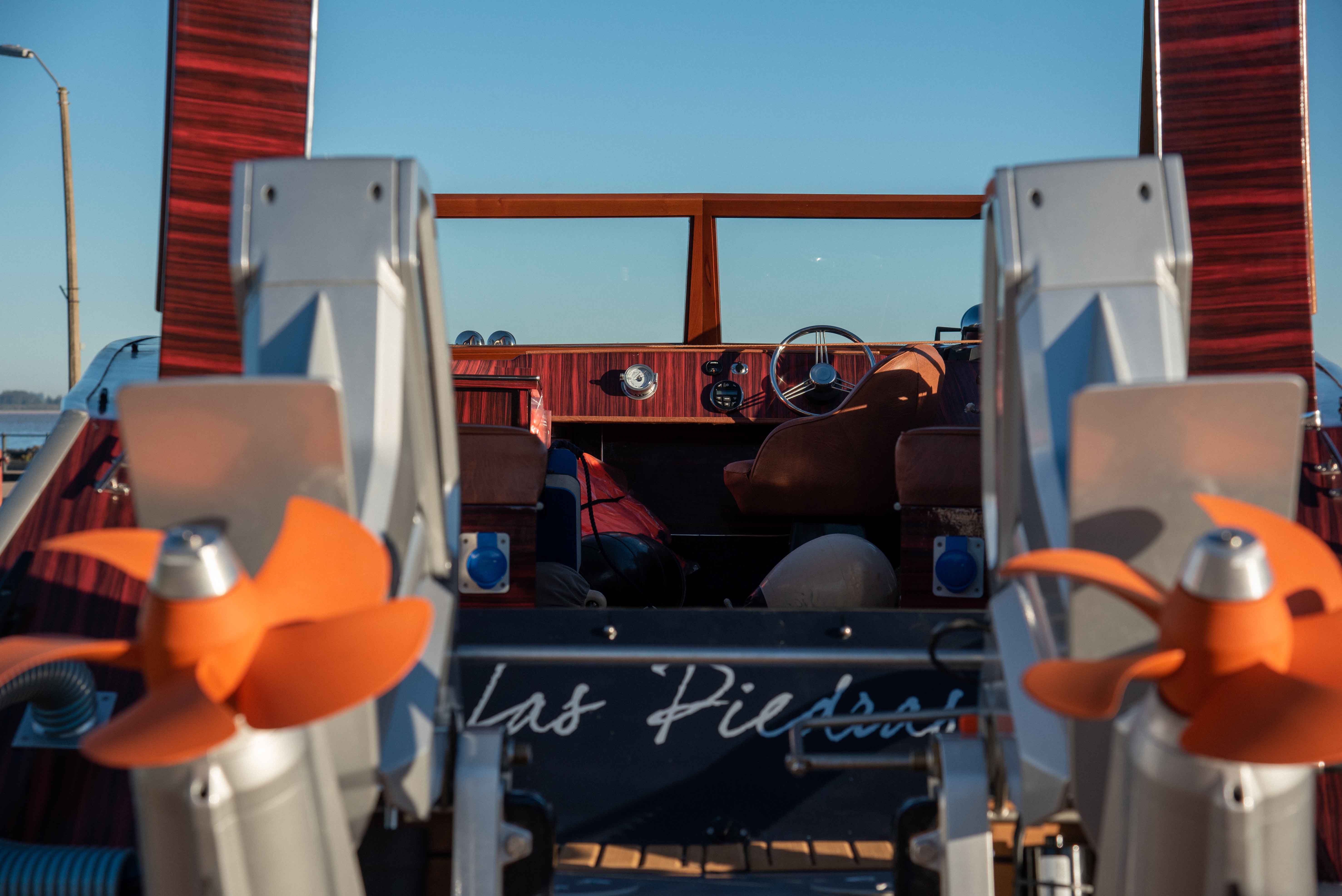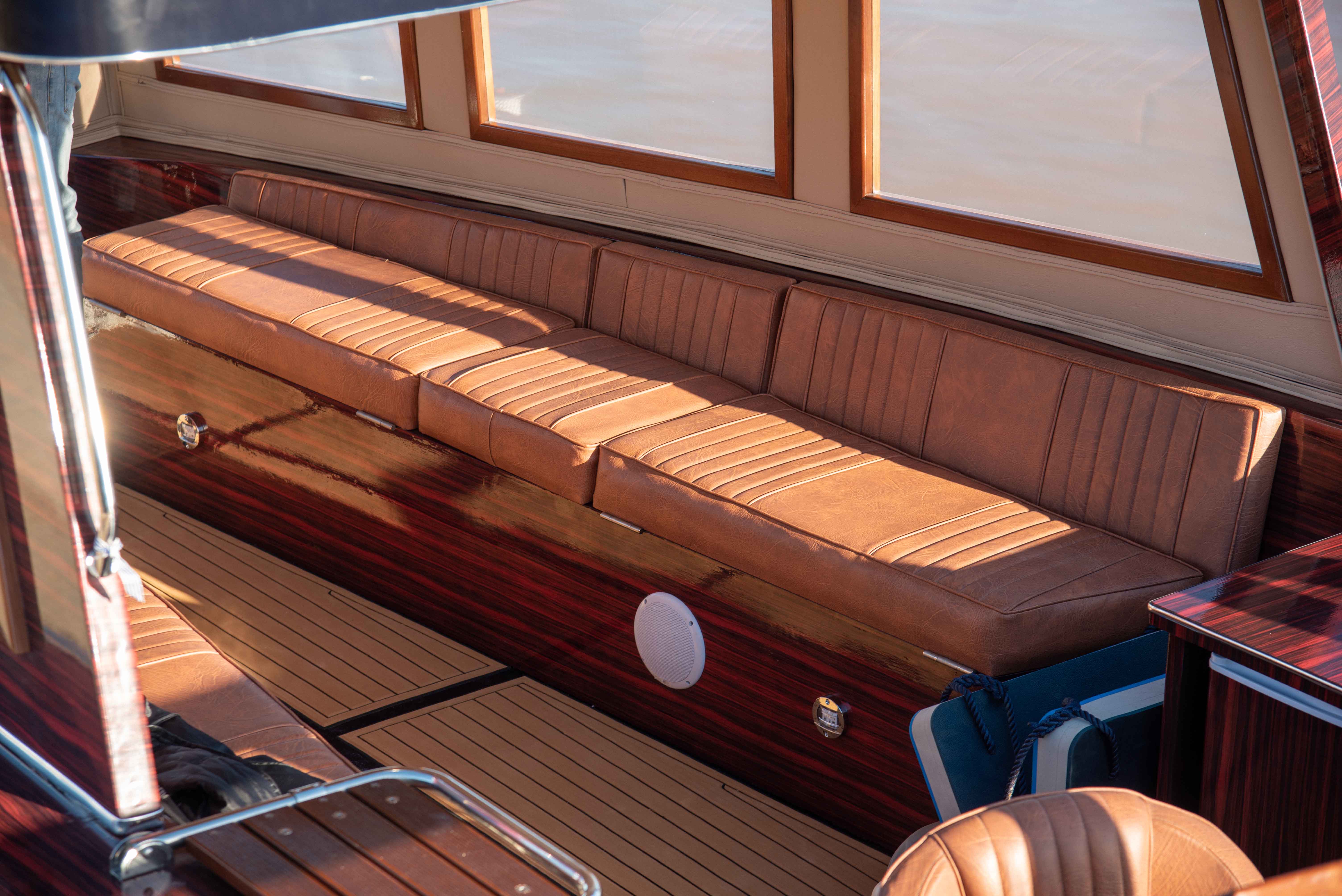Efficient and sustainable mobility advances in Uruguay in the nautical sector, with the construction of the first electric boat carried out in Juan Lacaze, Colonia.
The energy policy has allowed 98% of the country’s electrical energy to be clean and renewable today, so there is an important opportunity to decarbonize transport, where progress in electric mobility technology is key.
Julio Acosta, a merchant engineer with a degree in Nautical Systems, and Márcelo Álvarez, an advanced student of Naval Engineering, designed and developed the first electric boat in Uruguay called BM26.
From the point of view of the MOVÉS Project, this entrepreneurship represents an important step in cultural change, technological demonstration and innovation in efficient and sustainable mobility. This is why the Project accompanied the development process, supporting it technically and administratively, allowing it to obtain the ministerial interest of the Ministry of Industry, Energy and Mining (MIEM) and coordinating with the Directory of Industry.

The history
The idea began in 2009 as a thesis project at the Naval School, when Eng. Julio Acosta was studying Nautical Systems. The topic developed was about small electric vessels with a photovoltaic solar generation source. In 2010 Acosta finished his thesis and began to seek financing, a difficult task as he indicates that “electromobility was not yet what it is today and people still did not believe”. In 2018 he got in contact with his current partner, Márcelo Álvarez, who had had an experience in Chile with the development of electric taxis. Together they generated new projects and set out, once again, to seek financing options. In this process, through the Municipality of Maldonado, they made contact with their current client, the Hotel Las Piedras Fasano, who had the intention of navigating the Maldonado stream.

Design
According to the departmental digest 2938 of said department, the launching and navigation of any device powered by an internal combustion engine is prohibited in Laguna del Sauce, Laguna del Diario, Laguna Blanca, José Ignacio, departmental margin of Laguna Garzón and Arroyo Maldonado.
Responding to these navigation objectives, the boat was designed with particular characteristics: its motor is electric and the draft is less than half a meter. According to Acosta, ¨ that is precisely why the issue of choosing the exact length of the engine leg was complex, if the propeller is lower it will walk faster and push better, but you run the risk of hitting the bottom, that is one of the things to improve in the next one¨.
Asked about the boat’s electromobility characteristics, Acosta indicates: ¨The propulsion system is German, from the Torqeedo brand. It has two ten-kilowatt engines, each equivalent to thirty-hp combustion engines. It has batteries of twenty-eight kilowatts, there are eight batteries of 3500 watts, each one of twenty-four volts; the motors work on twenty-four volts, so you have to make a series. It has high-power chargers that charge from zero to one hundred in two hours.”

The autonomy depends on the speed, at maximum power it is one hour and thirty minutes; if you can lower the power a little, for example 70%, and the speed is maintained, you can increase 30% of autonomy without sacrificing speed. The important thing, according to Acosta, “is to carry out tests in the same place that you are going to navigate to find the optimum point, the cruising speed, and thus obtain the greatest autonomy without sacrificing much speed”.
This boat costs 147 thousand dollars, including trailer, registration and all safety equipment. Based on this work experience and the test of the boat, they propose to improve the second one, already bought by the client.
The design was inspired by the Italian Riva Aquarama motorboats, which are a luxury model worldwide. The boat has space for 11 people, including crew and captain. Acosta comments: “the hull has a structure in fibreboard, fiberglass reinforced plastic. It was made by the one off method, it is not a mold boat. We drew the boat to taste, to measure. Only when we obtained the product that the customer liked, did we start working on seaworthiness, buoyancy and other calculations, when we saw that it met the conditions, we presented it to the prefecture to obtain the approval of the model and begin construction.”

The advantages of electromobility in the nautical sector
Taking care of the environment is the most important thing, this type of boats avoid the spillage of hydrocarbons, fuels and oils. In turn, there are no greenhouse gas emissions.
On the other hand, they are silent, which is ideal for not altering the ecosystem of the animals, also promoting ecotourism since the motors are silent and do not generate vibrations. In this sense, they allow navigation through protected water reservoirs, complying with environmental requirements.
On the other hand, the operating cost of using electricity instead of fuel is eight times lower.
MOVÉS is a project financed by the Global Environment Facility (GEF), its implementing agency is the United Nations Development Program (UNDP) and is executed by Ministry of Industry, Energy and Mining (MIEM), the Ministry of the Environment (MA) and the Ministry of Housing and Territorial Planning (MVOT), with the collaboration of the Uruguayan Agency for International Cooperation (AUCI). Its objective is to promote more efficient and sustainable mobility.